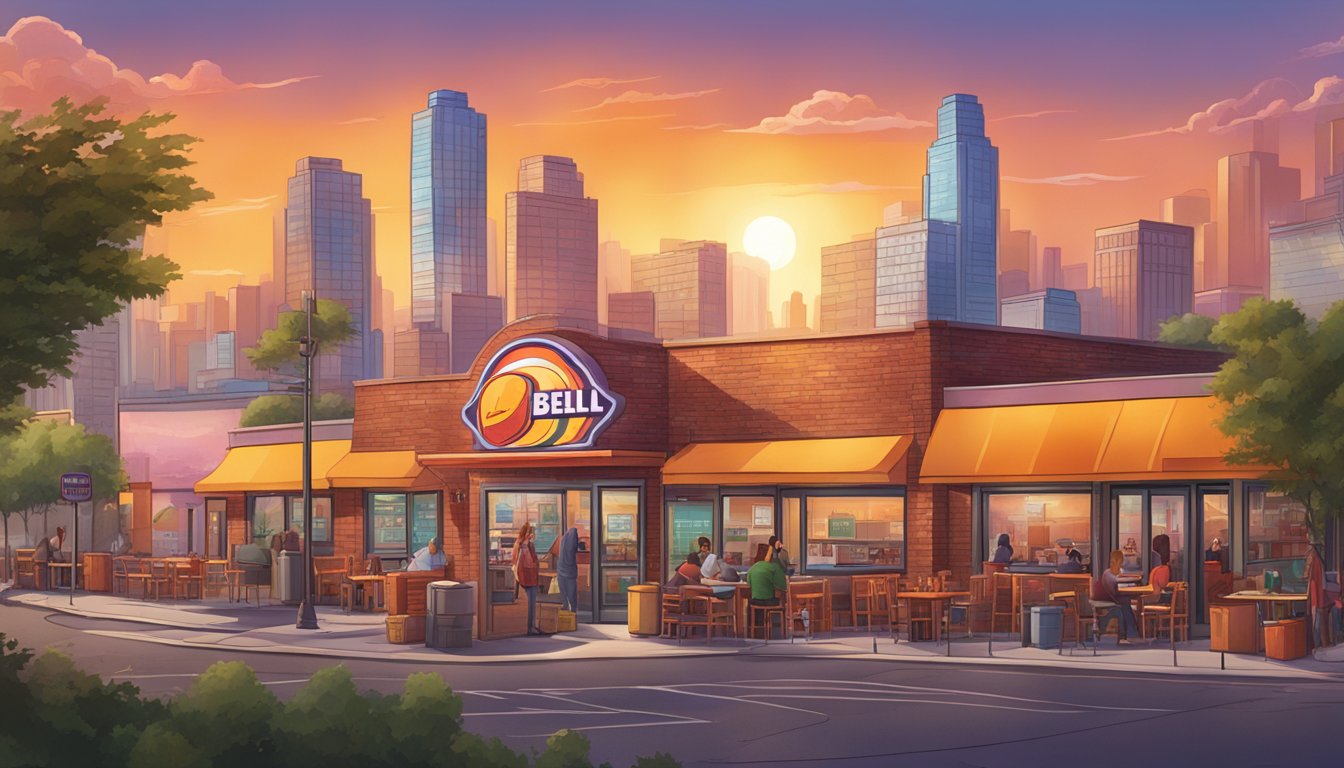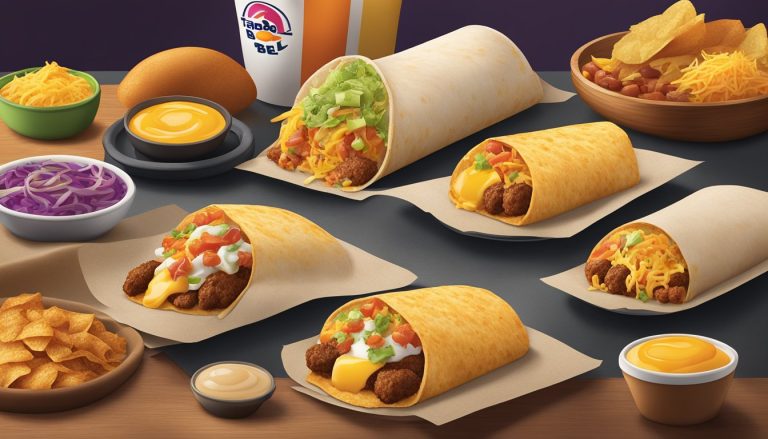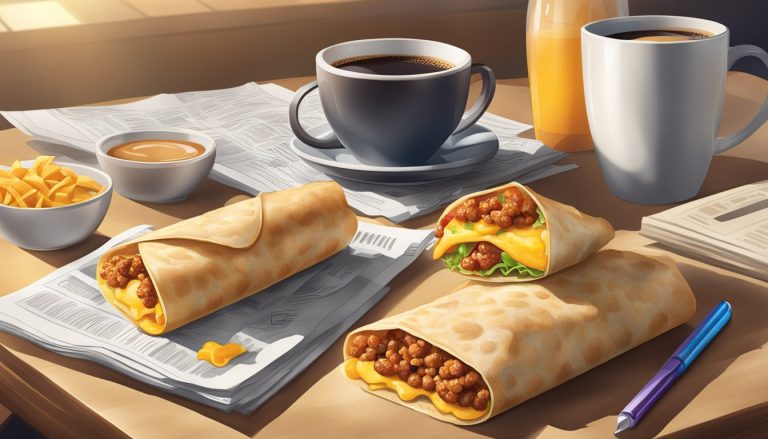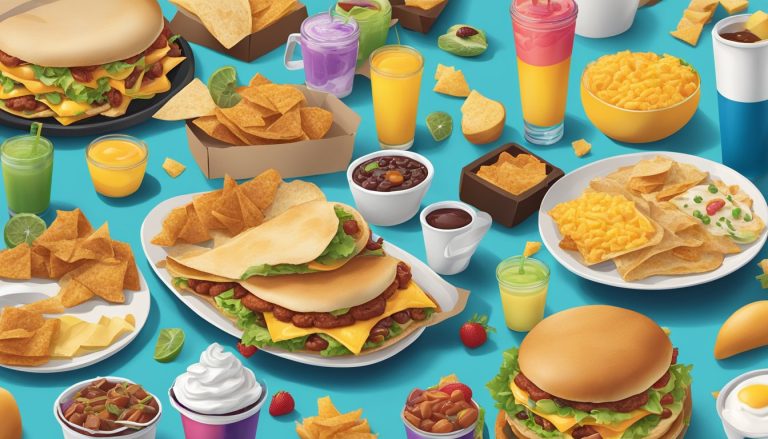Taco Bell’s breakfast commercials have become a sonic feast for the ears, blending catchy tunes with appetizing visuals to capture viewers’ attention. The fast-food chain’s audio branding strategy goes beyond mere background music, incorporating carefully crafted sound effects and jingles that resonate with their target audience.
The iconic Taco Bell ‘bong’ sound has evolved over the years, adapting to reflect the company’s changing brand identity and marketing campaigns. With the introduction of their breakfast menu and the “Live Más” tagline, the sound design has shifted to convey a more energetic and upbeat tone. This audio transformation aligns perfectly with Taco Bell’s efforts to position itself as a vibrant and exciting breakfast option in the competitive fast-food landscape.
Analyzing the sound design of Taco Bell’s breakfast commercials reveals a multi-layered approach to audio branding. From the use of popular songs to custom-made jingles and sound effects, each element is carefully selected to create a cohesive auditory experience that complements the visual aspects of their advertisements. This strategic use of sound not only helps Taco Bell stand out in a crowded marketplace but also reinforces brand recognition and recall among consumers.
Historical Context of Taco Bell’s Marketing

Taco Bell’s marketing journey began in the 1960s when founder Glen Bell introduced Mexican-inspired fast food to American consumers. The brand’s early advertising focused on highlighting its unique menu offerings and affordable prices.
In the 1990s, Taco Bell launched its iconic “Yo Quiero Taco Bell” campaign featuring a talking Chihuahua. This memorable campaign significantly boosted brand recognition and became a pop culture phenomenon.
The early 2000s saw Taco Bell shift its strategy with the “Think Outside the Bun” slogan. This campaign emphasized the brand’s differentiation from traditional burger-centric fast food chains.
Catchy jingles and memorable commercials have been staples of Taco Bell’s marketing approach. These elements have helped create strong brand associations and foster customer loyalty over the years.
Taco Bell’s marketing has consistently adapted to changing consumer preferences and cultural trends. The brand has embraced social media, influencer partnerships, and interactive campaigns to engage younger audiences.
Throughout its history, Taco Bell has used humor, creativity, and bold flavors to stand out in the competitive fast food landscape. This approach has contributed to its strong brand recognition and loyal customer base.
The Evolution of Taco Bell’s Breakfast Commercials
Taco Bell’s breakfast commercials have undergone significant changes over the years, adapting to consumer preferences and cultural trends. These advertisements have leveraged music, celebrity appearances, and menu innovations to capture audience attention.
From Catchy Jingles to Modern Anthems
Taco Bell’s early breakfast commercials relied heavily on catchy jingles to create brand recognition. These simple, memorable tunes highlighted key menu items and aimed to establish Taco Bell as a breakfast destination.
As musical tastes evolved, so did Taco Bell’s approach. The company began incorporating popular songs and collaborating with well-known artists. A notable example was the use of “Best Day of My Life” by American Authors, which perfectly captured the upbeat energy associated with Taco Bell’s breakfast offerings.
The shift to modern anthems allowed Taco Bell to connect with younger audiences and create a more contemporary brand image. These music choices often reflected current trends and helped position Taco Bell’s breakfast as a fun, exciting option.
The Role of Celebrity Endorsements
Celebrity endorsements have played a crucial role in Taco Bell’s breakfast commercial strategy. One of the most memorable collaborations was with Justin Timberlake, who brought star power and charm to the brand’s breakfast campaigns.
Taco Bell has also partnered with popular bands like Imagine Dragons and The Killers. These collaborations helped create buzz and lent credibility to Taco Bell’s breakfast offerings among music fans.
Celebrity involvement extended beyond appearances, with some stars contributing creatively to commercial concepts. This approach added authenticity and helped Taco Bell’s breakfast ads stand out in a crowded marketplace.
Expansion of the Breakfast Menu
Taco Bell’s breakfast commercials have evolved alongside its expanding menu. Initial ads focused on basic offerings like breakfast burritos and coffee. As the menu grew, so did the complexity and creativity of the commercials.
The introduction of unique items like the Waffle Taco and Breakfast Crunchwrap sparked new advertising opportunities. These innovative products allowed Taco Bell to showcase its creativity and differentiate itself from traditional breakfast options.
Nacho Fries, while not a breakfast item, influenced the overall tone of Taco Bell’s advertising. The success of Nacho Fries campaigns inspired more daring and unconventional approaches in breakfast commercials, pushing creative boundaries and capturing audience attention.
Sound Design Principles in Commercials

Effective sound design in commercials relies on carefully crafted auditory elements that engage viewers and reinforce brand identity. Strategic use of pitch, distinctive bell sounds, and memorable melodies can significantly enhance the impact of advertisements.
The Importance of Pitch and Bell Sound
Pitch plays a crucial role in commercial sound design, influencing audience perception and emotional response. Higher pitches often convey excitement or urgency, while lower pitches can suggest authority or reliability. The iconic Taco Bell sound exemplifies the power of a well-designed bell sound. It uses a combination of sine waves and FM synthesis to create a unique audio signature that instantly identifies the brand. This distinctive chime cuts through background noise and captures attention, making it an effective tool for brand recognition.
Creating a Catchy Melody
A catchy melody serves as the backbone of memorable commercial soundtracks. It should be simple enough to be easily recalled, yet distinctive enough to stand out. Successful melodies often incorporate repetition and hooks that resonate with listeners. The rhythm and tempo of the melody should align with the brand’s image and the commercial’s message. For instance, an upbeat, energetic tune might suit a breakfast commercial aimed at starting the day on a positive note. Sound designers may experiment with various instruments and tones to find the perfect musical elements that complement the visuals and reinforce the brand’s identity.
Cultural Relevance and Influences
Taco Bell’s breakfast commercials adeptly leverage cultural touchstones and dining trends. The sound design of these ads reflects both contemporary fast food experiences and Mexican-inspired culinary themes.
Reflecting Fast Food Dining Experiences
Taco Bell’s breakfast commercials capture the essence of modern quick-service dining through carefully crafted soundscapes. The sizzle of bacon and eggs hitting the grill evokes the bustling energy of a busy kitchen. Muffled chatter and clinking utensils simulate the ambient noise of a crowded restaurant.
These auditory cues create a sense of familiarity for viewers, connecting them to the fast food experience. The sound of a drive-thru speaker crackles to life, followed by a friendly greeting, tapping into the convenience-driven culture of on-the-go meals.
Incorporating Mexican-Inspired Themes
Taco Bell’s sound designers infuse their breakfast commercials with subtle nods to Mexican culinary traditions. The gentle crackling of freshly made tortillas provides an authentic backdrop to menu descriptions. Upbeat Latin-inspired music often underscores the ads, creating a lively atmosphere.
The sizzle of chorizo and the pop of jalapeños add distinctive audio elements that set Taco Bell’s breakfast offerings apart from traditional fast food fare. These sounds not only highlight the Mexican-inspired ingredients but also appeal to adventurous eaters seeking bold flavors.
By blending familiar fast food sounds with Mexican-inspired audio cues, Taco Bell creates a unique sonic identity for its breakfast menu.
Analyzing Taco Bell’s Commercial Songs
Taco Bell’s commercials feature carefully selected music that aligns with their brand identity and marketing goals. The songs range from popular hits to custom jingles, each chosen to create a specific atmosphere and emotional response.
Dissecting ‘Live Más’ Campaign Music
The ‘Live Más’ campaign introduced a new musical direction for Taco Bell. The song “Gloria” by Mark Ronson became a central element of this campaign. Its upbeat tempo and energetic rhythm perfectly encapsulated the brand’s adventurous spirit.
The lyrics “Gloria” were reimagined to fit Taco Bell’s message, encouraging customers to live life to the fullest. This adaptation demonstrated Taco Bell’s ability to blend pop culture with their brand identity.
The campaign’s success was partly due to the song’s catchy nature and its ability to stick in viewers’ minds long after the commercial ended.
The Impact of ‘Best Day of My Life’
Taco Bell’s use of “Best Day of My Life” by American Authors marked a significant moment in their advertising strategy. The song’s optimistic lyrics and uplifting melody aligned perfectly with Taco Bell’s youthful and energetic brand image.
The commercial featuring this song showcased people enjoying Taco Bell’s offerings in various settings. It effectively tied the brand to positive, memorable experiences.
By using a popular song, Taco Bell tapped into existing emotional connections audiences had with the music. This strategy helped create a stronger association between the brand and feelings of happiness and excitement.
Assessment of ‘Taco Bell Jingle’ and Its Variations
Taco Bell’s iconic jingle has undergone several iterations over the years. The original “Ding dong, tacos, tacos” jingle was simple yet incredibly effective in building brand recognition.
Later versions incorporated more complex melodies and lyrics, but always maintained the core “bell” sound. This consistency helped maintain brand identity across different campaigns.
The jingle’s adaptability allowed it to be used in various contexts, from breakfast promotions to late-night offerings. Its versatility demonstrates Taco Bell’s understanding of the power of sonic branding in creating a lasting impression on consumers.
Marketing Campaign Strategies

Taco Bell’s breakfast commercials employ targeted messaging and audiovisual synergy to capture audience attention. The brand’s campaigns focus on memorable elements and innovative products like Doritos Locos Tacos to stand out in the competitive fast food landscape.
Target Audience and Brand Messaging
Taco Bell’s breakfast commercials primarily target young adults and millennials. The brand’s messaging emphasizes innovation and breaking from traditional breakfast norms. Campaigns like “Breakfast Defectors” challenge conventional morning meal options, positioning Taco Bell as a bold alternative.
Memorable slogans and catchphrases reinforce the brand’s youthful image. Taco Bell’s “Live Más” tagline embodies their adventurous spirit, encouraging customers to embrace new flavors and experiences.
The introduction of Doritos Locos Tacos exemplifies Taco Bell’s innovative approach. This product fusion became a centerpiece of marketing efforts, appealing to snack food enthusiasts and taco lovers alike.
Analysis of Visuals and Audio Synergy
Taco Bell’s commercials showcase a careful blend of visuals and sound design. Bright colors and dynamic camera movements create an energetic atmosphere, mirroring the brand’s vibrant personality.
The audio complements the visuals with upbeat music and catchy jingles. Sound effects emphasize the crunch of taco shells and the sizzle of fresh ingredients, appealing to viewers’ senses.
Voiceovers in Taco Bell ads often use a mix of humor and enthusiasm. This approach reinforces the brand’s fun, approachable image while highlighting new menu items or promotions.
Strategic use of silence and sound contrast helps draw attention to key messages. Sudden pauses or volume changes create memorable moments that stick with viewers long after the commercial ends.
Consumer Reception and Feedback

Taco Bell’s breakfast commercials have generated significant buzz among consumers. Many viewers praise the sound design for its attention-grabbing nature and ability to evoke hunger cues.
Customer reviews often highlight the distinctive “bell” sound as memorable and effective. Some describe it as Pavlovian, triggering cravings for Taco Bell’s breakfast offerings.
Social media reactions show a mix of enthusiasm and humor. Memes and parodies incorporating the commercial sounds have circulated widely, increasing brand engagement.
Sales data indicates a positive correlation between the sound-focused ads and breakfast item purchases. Taco Bell reported a 9% increase in morning traffic following the campaign launch.
Market research firms have noted the commercials’ impact on brand recall. Studies show a 15% improvement in consumers’ ability to identify Taco Bell’s breakfast menu after exposure to the ads.
Some critics argue the sound design can be jarring or overly repetitive. However, this polarization has contributed to increased discussion and brand visibility.
Consumer surveys reveal that 72% of respondents find the sound design “catchy” or “effective.” This positive reception has translated into stronger brand loyalty among breakfast patrons.
The campaign’s success has prompted competitors to re-evaluate their own audio branding strategies. Industry analysts predict a trend towards more sonically-driven fast food advertising.




